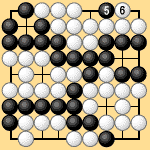 |
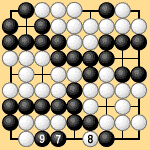 |
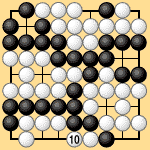 |
| Dia. 3-2-4 | Dia. 3-2-6 | Dia. 3-2-7 |
|---|---|---|
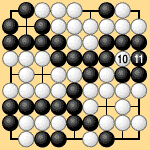 |
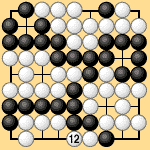 |
|
| Dia. 3-2-8 | Dia. 3-2-9 |
| 3.2 The Super-ko Rule (2) |
|---|
| If we continue with 8 and 9 in Dia. 3-2-6, however, something interesting happens. If White plays 10 in Dia. 3-2-7, he repeats Dia. 3-2-4. White 10 is therefore prohibited. White must play 10 in Dia. 3-2-8 as a ko threat; then he can capture by playing 12 in Dia. 3-2-9. |
 |
 |
 |
| Dia. 3-2-4 | Dia. 3-2-6 | Dia. 3-2-7 |
|---|---|---|
 |
 |
|
| Dia. 3-2-8 | Dia. 3-2-9 |
| If we play on, after White 14 in Dia. 3-2-10 Black A is not allowed* because it would repeat Dia. 3-2-8. At this point Black's threats are exhausted and White wins the game. An eternal life is fought out just like an ordinary ko: both Black and White must make ko threats. |
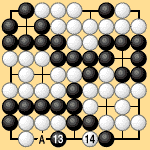 |
| Dia. 3-2-10 |
|---|
|
The super-ko rule is thus a generalization of the ko rule. In cyclic positions such as triple or quadruple ko, the game progresses without ever recreating a previous position. The super-ko rule is sometimes phrased as "prohibiting repetition of the same position," but that phrasing can give rise to doubts as to which move should be interpreted as the repeating move. There is a danger that the interpretation may differ slightly, depending on whether "repetition" is stressed or "same position" is stressed. The expression "prohibiting recreation of the same position" is better because it leaves no room for any doubt whatsoever.
|